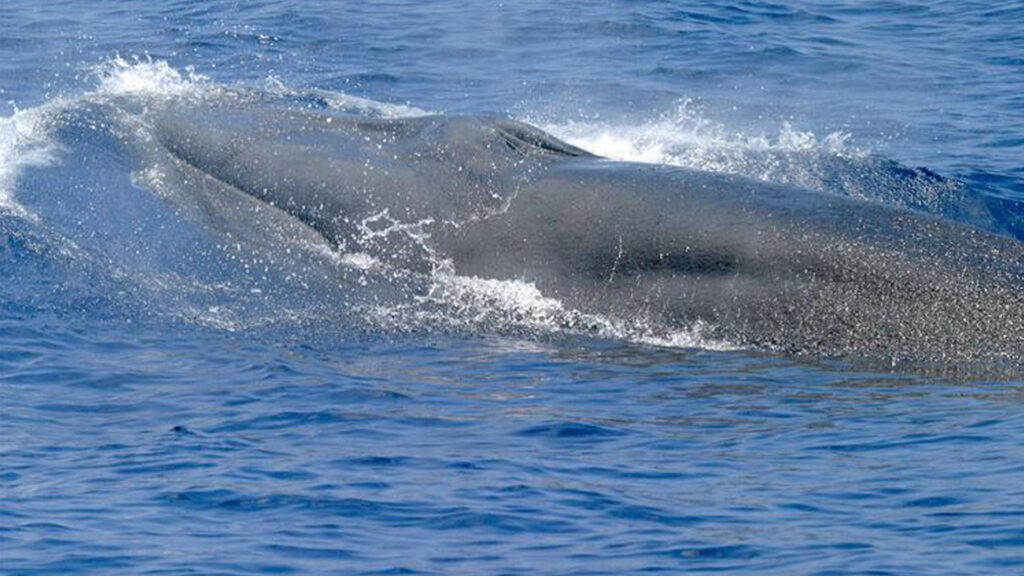By Cara Fleischer
Now that summer’s here, folks are heading out to enjoy our beaches and Gulf waters. A growing group of citizen advocates and scientists will also be looking out for one of the rarest residents in those waters – the Gulf of Mexico Rice’s whale.
Fewer than 100 Gulf of Mexico Rice’s whales remain on Earth, and scientists warn that unless we protect these whales, we could witness the first human-caused extinction of a whale species in recorded history – right here in our Gulf.
One pending government action would help – designating a Gulf of Mexico Rice’s whale critical habitat area so these whales can remain safe and the population can rebound to healthy levels. The National Marine Fisheries Service is due to propose a Gulf of Mexico Rice’s whale critical habitat, maybe before the summer is over. It’s the least we can do to care for these rare creatures.

These are the only whales that spend their whole lives in the Gulf, and in 2021 scientists identified them as a new species to science. Before that, they thought they were another kind of endangered whale in the Gulf called the Bryde’s whale.
Gulf of Mexico Rice’s whales’ known range is entirely within North America’s waters. They often use an unusual deep-water feature called the DeSoto Canyon off the coast of Pensacola, but scientists have recently confirmed that they range all along the shelf break in waters 100-400 meters deep off of Texas, Alabama, Mississippi and Louisiana, and range as far as Mexico.
As we relax on the beach, boat and fish, Gulf of Mexico Rice’s whales are forced to navigate an underwater landscape that keeps getting more industrial. Oil and gas corporations run freighters through whale habitat, drill deeper and blast along the Gulf floor. The drillers’ tortuous underwater air gun blasts are as loud as jet engines, and they interfere with the whales’ ability to mate, communicate with their young and find food.
Whales get hit by boats as they bask at night near the oceans’ surface. Oil spills are another constant threat – BP’s 2010 Deepwater Horizon disaster killed an estimated 20% of their population. Today, the Gulf has about 2,000 oil and gas platforms and more than 20,000 miles of active pipelines.
The fossil fuel industry has fought against protections for this species – including set-asides that would create safe zones in whale habitat and common-sense speed limits to keep whales from getting run over.

Moving forward with an identified critical habitat area is a critical step to prevent the whales from going extinct. At the end of 2023, the National Oceanic and Atmospheric Administration added the Rice’s whale to a de facto extinction watchlist – an awareness program called Species in the Spotlight identifying 10 species that government scientists say need “immediate, targeted actions” to “stabilize the population and prevent extinction.”
The Gulf of Mexico Rice’s whale is protected by the Endangered Species Act, and it is on this list of species in danger of extinction for a reason – to make sure we do all we can to protect it.
It is important to remember that we can reverse this so that future generations will not have to hear about a whale that went extinct on our watch. Gulf of Mexico Rice’s whales continue to reproduce, and if conditions improve, the population has the potential to bounce back.
Giving them some breathing room by designating critical habitat is a critical, common-sense step forward.
Cara Fleischer is the Creation Care Task Team chair of the Florida Conference of the United Methodist Church. This opinion piece was originally published by the Tampa Bay Times, which is a media partner of The Invading Sea.
If you are interested in submitting an opinion piece to The Invading Sea, email Editor Nathan Crabbe at ncrabbe@fau.edu. Sign up for The Invading Sea newsletter by visiting here.



